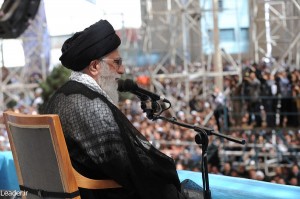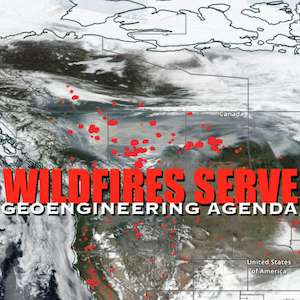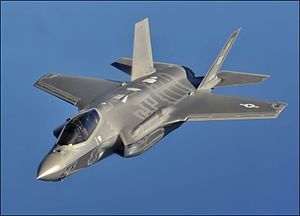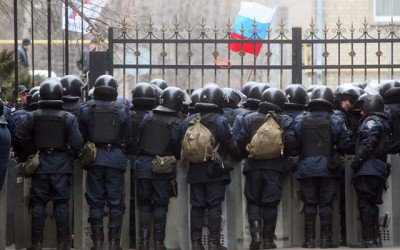Source: ConsortiumNews.com
The U.S. acts as if its military has an inalienable right to operate close to the borders of other nations and those nations have no right to see these actions as provocative, writes Jonathan Marshall.
If humanity ever suffers a Third World War, chances are good it will start in some locale distant from the United States like the Baltic or South China Seas, the Persian Gulf, or Syria, where Washington and its rivals play daily games of “chicken” with lethal air and naval forces.
Far from enhancing U.S. security, the aggressive deployment of U.S. armed forces in these and other hot spots around the world may be putting our very survival at risk by continuously testing and prodding other military powers. What our military gains from forward deployment, training exercises, and better intelligence may be more than offset by the unnecessary provocation of hostile responses that could escalate into uncontrollable conflicts.
The most obvious example is Russia, which top Pentagon officials like to remind us “poses an existential threat to the United States” by virtue of its huge nuclear arsenal. So it was discomforting to learn a few days ago that U.S. and Russian warplanes are experiencing near misses in Syrian airspace “once every 10 days-ish,” in the words of Air Force Lt. Gen. Jeff Harrigian.
The risk of war with Russia would skyrocket, of course, if the United States were to try to impose a “no-fly-zone.”
Potentially deadly incidents aren’t confined to Syria. In September, a Russian fighter jet flew within 10 feet of a U.S. Navy spy plane over the Black Sea. Six months ago, reacting to an increase in NATO war games and maneuvers, Russian aircraft buzzed a U.S. Navy destroyer conducting exercises with Poland in the Baltic Sea.
Secretary of State John Kerry declared that the United States would have had every right to shoot down the plane. The Russians, noting that the exercises were taking place near the base of their Baltic Fleet, insisted they were simply exercising their rights to fly.
A couple of days later, a Russian jet intercepted a U.S. reconnaissance plane in the same region. A Pentagon spokesman condemned the Russian pilot’s “aggressive” and “unprofessional” maneuvers that could “escalate tensions between countries.” A Russian spokesman said its air defense forces had reacted prudently to “an unidentified target rapidly approaching the Russian border.”
Indignant over Iran
In the Persian Gulf, the U.S. Navy recorded 19 dangerous confrontations with Iranian vessels during the first half of this year, up from 10 in the same period in 2015. Another 11 such confrontations reportedly took place this July and August.

Iran’s Supreme Leader Ali Khamenei speaks to a crowd. (Iranian government photo)
The most notorious incident, of course, occurred this January, when Iranian gunboats detained 10 U.S. Navy sailors for a day after they strayed into Iranian waters. The Obama administration, which had recently negotiated a nuclear accord with Iran, chose not to inflate the incident. In contrast, a trivial engagement between a U.S. Navy vessel and unarmed Iranian patrol boats in January 2008 fired up President George W. Bush and came perilously close to triggering another Tonkin Gulf Incident.
Although Iran is not a nuclear power, it could be a regional menace if drawn into war, with ballistic missiles capable of reaching Israel and Saudi oil fields, and mines that could make the Persian Gulf virtually impassable.
U.S. air and naval forces also engage in dangerous confrontations every few months with China, a nuclear state and the world’s fastest-rising conventional military power.
In late October, China’s Defense Ministry protested an allegedly “illegal” and “intentionally provocative” patrol by the guided missile destroyer USS Decatur, which was sailing close to the Paracel Islands in the South China Sea to protest Chinese maritime claims. The Chinese vowed to increase their own air and maritime patrols to “resolutely defend national sovereignty and security.”
This summer, in the space of less than a month, Chinese fighter jets twice intercepted U.S. Air Force RC-135 spy planes off of China’s coast. The Pentagon decried the Chinese response as dangerously “unsafe,” while the Chinese complained that U.S. insistence on carrying out “close reconnaissance activities against China . . . severely undermines China’s maritime security.”
Similar confrontations and now commonplace. They offer frightening reminders of the infamous 2001 Hainan Incident, which was triggered when two Chinese fighter jets intercepted a Navy EP-3 spy plane operating near the Paracel Islands and Hainan Island. One Chinese pilot maneuvered too close to the American plane and died when his cockpit was crushed. The damaged EP-3 and its crew managed to make an unauthorized emergency landing on Hainan. The George W. Bush administration brought the crew — but not the spy plane — home only after sending a letter of regret to defuse the international incident.
As geopolitical analyst Michael Moran observed at the time, “The drama of this aerial collision underscores an important and little-known post-Cold War reality: America’s surveillance network has grown so vast and formidable that in some respects it is feared as much as U.S. weaponry itself.”
Trouble with Aerial Spying
Of course, aerial spying first became a cause celèbre during the Cold War when the Soviets shot down Gary Powers and his U-2 spy plane in 1960. The resulting diplomatic crisis derailed a promising international summit on nuclear disarmament.

Since then, the tempo of spy flights has dramatically increased, despite the availability of satellites to monitor the world.
“On any given day, there are more than a dozen ‘strategic’ reconnaissance flights, supplemented by dozens of shorter range missions by tactical listening aircraft and helicopters,” reported William Arkin after the Hainan Incident.
Unlike satellites, intrusive planes trigger their targets’ radar systems, light up their communications networks, and provoke military command responses. That’s why American military leaders value the tactical intelligence they provide. That’s also why countries like China view them with such hostility.
The spy flight that triggered the Hainan Incident cost only one life, but history shows the risks can be far greater, especially during times of great political tension.
For example, U.S. spy flights along the Soviet Union’s eastern border helped provoke the tragic downing of a Korean Air Lines passenger jet in September 1983, when it strayed into sensitive Soviet airspace over military facilities in the Far East. The loss of 269 lives was terrible enough, but the resulting propaganda barrage from the Reagan administration helped arouse fears in the Kremlin into that war with the United States might be imminent.
The two jittery superpowers came dangerously close to nuclear war later that month when Soviet early warning systems falsely reported the launch of U.S. Minuteman missiles.
Military professionals in the United States and many of its rivals generally contain these incidents rather than letting them get out of hand. But accidents, miscalculations, and political opportunism pose ever-present risks of escalating small engagements into much larger military confrontations.
There’s plenty of blame to go around. But at the end of the day, what’s striking is that virtually every one of these dangerous incidents takes place as a result of U.S. military patrols or exercises near the borders of countries with whom we are ostensibly at peace, not while defending our own borders.
Americans raised on a pervasive ideology of “exceptionalism” all too easily assume that our far-flung military presence is simply the natural order of things, and that any challenge to it must be countered. A little reflection, however, should suggest why countries — like Russia, China and Iran — grow hostile and even paranoid as they are tested almost daily by the air and naval forces of a superpower. Even if we do not appreciate their point of view, we should seriously ask whether our military really serves U.S. security interests by provoking new opportunities for deadly confrontations almost daily.
Source: ConsortiumNews.com









































































One Response
Why no comments? DENIAL too strong. Medical and psychological DEFINITION is so dead on true it makes me laugh! They are looking for any Big excuse or false flag to pursue the Agenda. Look up Agenda 21 Depopulation and learn some real END game TRUTHS!! The TRUTH SETS us free. I say and pray in the name of LOVE. AMEN.